Like many Georgian foods, khinkali are not originally from the country. But tracing where, exactly, their story began means confronting some powerful national myths.
At the height of summer, Tbilisi is a heat trap. Ringed on three sides by an amphitheatre of mountains, the Georgian capital sits in a valley where stifling, humid air collects. Right up until evening, just traversing the city can be a life-sapping slog.
Walking the streets in June, it is surprising, then, to see families sit at lunchtime around restaurant tables piled high with swollen, boiled dumplings, named khinkali (the kh is pronounced as a throaty h). Each is almost the size of a tennis ball, and nearly bursting with meat, spices, herbs and all the juices that ooze from these uncooked innards as the dumping boils, which end up trapped inside the dough to make a puffy orb of broth.
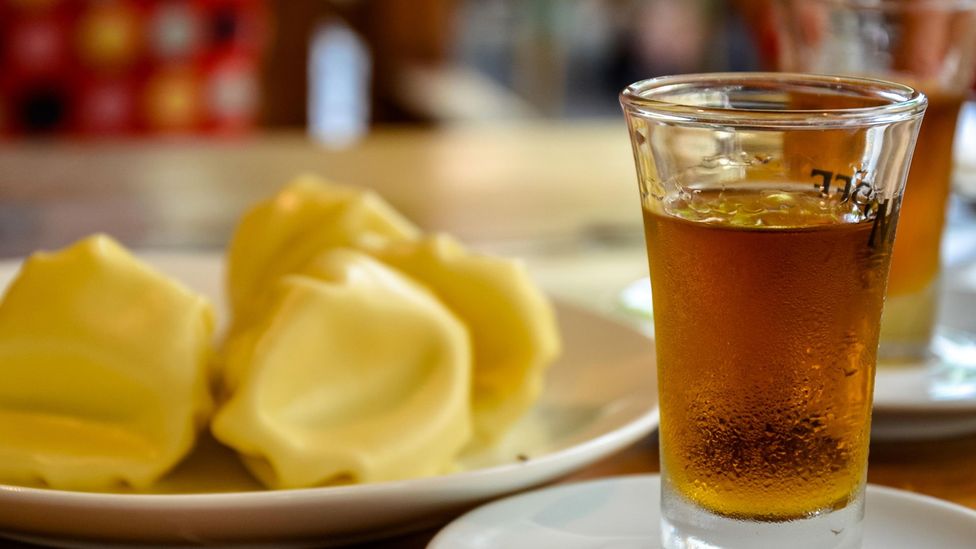
Often, all you see are the post-meal remains: a graveyard of thick, pinched dumpling nibs, from where the khinkali is sealed. As you eat, you grip this dough-handle, and then discard it like so many headstones for departed snacks. Despite Georgia’s reputation as the birthplace of wine, a frosty beer is understandably the preferred summer accompaniment.
At first sight, a few dozen dumpling-tops suggests that a gut-busting quantity of meat-filled dough and broth has been consumed in the middle of a sweltering day. But with the first bite into a khinkali, it is easier to understand going back, again and again. The rush of broth that escapes has a delicate flavour of just-cooked spiced meat that’s comforting but neither heavy nor greasy.
Georgia is seeing its visitor numbers boom, more than doubling since 2012, to more than 8 million last year, with half of all trips to Tbilisi. Many travellers return home raving about discovering one of Europe’s great underappreciated cuisines, a patchwork of dishes combining ingredients from East and West, including juicy coal-cooked pork skewers called mtsvadi, stews such as the spicy ratatouille-like ajapsandali, assorted vegetable mezze called pkhali, and in every restaurant, some variety of khachapuri cheese bread.
Like so many of the foods found in Tbilisi’s restaurants, khinkali are not originally from the city. But tracing where, exactly, their story began means confronting some powerful national myths.
Every Georgian dish is a poem
Food is both a wellspring of national pride within Georgia and perhaps the country’s most beloved cultural export, recognised for its quality and diversity across the Caucasus and beyond. Nineteenth-Century Russian poet Alexander Pushkin once wrote that “Every Georgian dish is a poem”. And today, if you ask for restaurant recommendations in Moscow or St Petersburg, Georgian restaurants will likely make the list, despite ongoing hostilities between the two countries.
Despite generations of 20th-Century Soviet rule when food and wine production was strictly standardised, and through the brutal poverty unleashed by the country’s transition to capitalism in the 1990s, Georgia’s distinctive recipes have been passed down through families. Suggesting these canonical dishes do not truly belong to this small nation of fewer than 4 million people, is likely a sure-fire way to make yourself unpopular in Georgia.
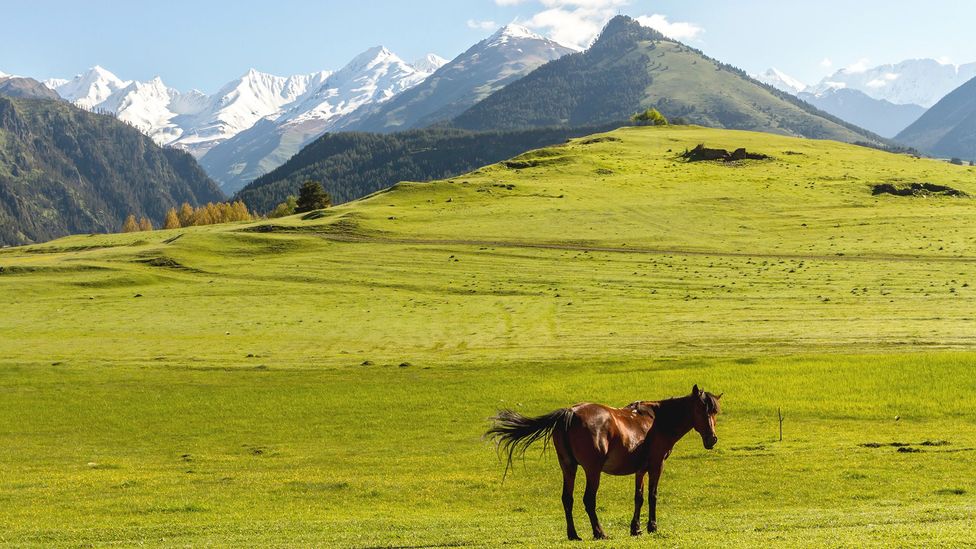
The short story says khinkali originated in the rugged mountains to the north of Tbilisi, where people in the Tusheti and Pshavi regions both claim to have invented it.
During blistering winters in Tusheti, temperatures regularly fall below -15°C, and villages on the slopes of the Caucasus Mountains are cut off by metres of snowfall. For centuries before becoming restaurant favourites, khinkali were a warming offering for Caucasus shepherds, with chopped lamb or mutton at the centre, which was replaced by ground beef and pork as the dumpling migrated to the city.
At Tbilisi restaurant Sofia Melnikova’s Fantastic Douqan, chef Lena Ezieshvili makes some of Tbilisi’s most celebrated khinkali from a Tushetian recipe that mixes seven parts beef to three parts pork, adding coriander, pepper and cumin. Under a vine-covered terrace in a courtyard hidden behind central Tbilisi’s Giorgi Leonidze State Museum of Literature, waitstaff serves them on ramshackle, brightly painted wooden tables.
The Fantastic Douqan – whose name pays homage to a legendary meeting place for Tbilisi’s artists and poets during Georgia’s brief period of independence from Russian control in the early 20th Century – is one of the last remaining restaurants in Tbilisi to make each parcel by hand. “Khinkali is something you eat in the mountains where it is cold and you are hungry and tired,” said Ezieshvili. The extra effort ensures that the first bite delivers that same comfort: “Like they would feel eating it in the mountains.”
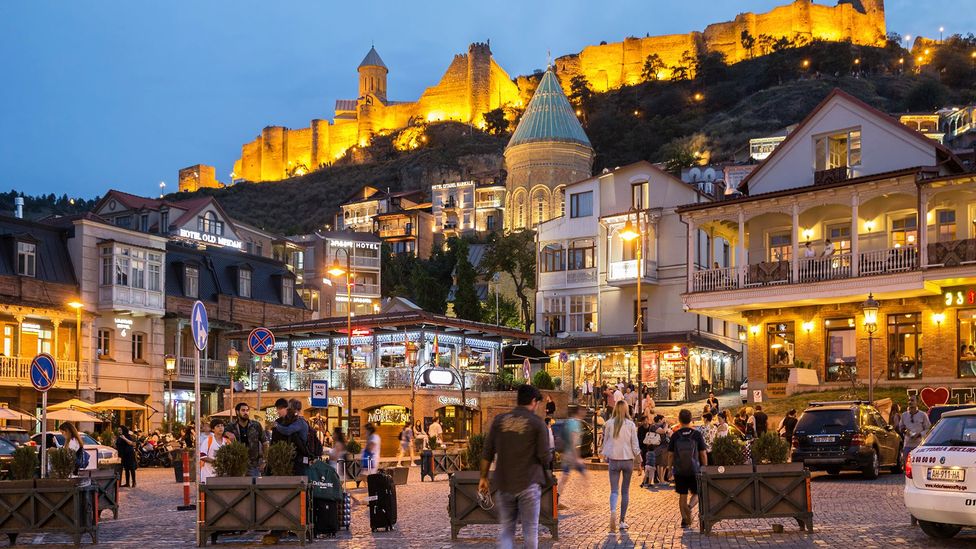
But one of Georgia’s best-known chefs, Tekuna Gachechiladze, is famous for pushing the kind of heretic questions most Georgians wisely avoid, asking if the Khinkali’s family tree can be traced back deeper in time and further beyond the Caucasus foothills.
“If you tell Georgians khinkali is not traditional Georgian, they will kill you,” Gachechiladze laughed. “But – it’s dumplings. We all know, originally, this meat and the dough combination comes from China.”
If you tell Georgians khinkali is not traditional Georgian, they will kill you
Gachechildaze has become known for challenging the perceived notion that Georgia was historically an isolated landmass that conjured a cuisine from nothing. Instead, she recognises how thousands of years of invasions and empires have shaped the culinary cannon of this nation, which sits at a strategic crossroads of international trade routes and has been claimed by Russian, Turkish, Persian and Mongol empires.
At her four “fusion” restaurants in Tbilisi, Gachechiladze made her name taking apart and reassembling Georgian classics.
When she set her sights on the khinkali, the “small” tweak meant flipping the dumpling inside out: “I came up with the idea of the khinkali soup, which has got the same dumplings, but much smaller: one bite with … a double broth – broth inside and a spicy broth [outside].”
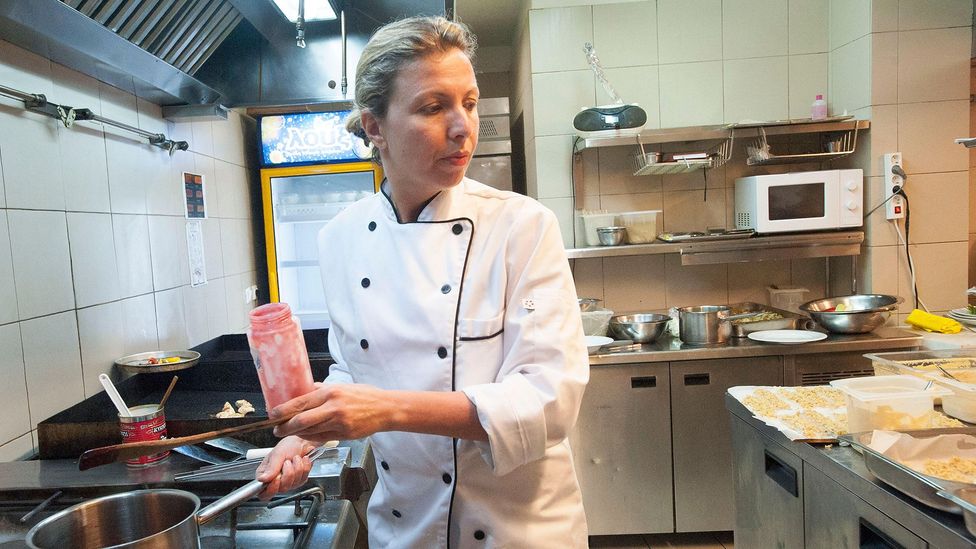
Her soup became a bestseller and has been among a range of Gachechiladze innovations now emulated on the menus of more traditional Georgian restaurants. She plans to open a new Khinkaleria in Tibilisi next year that will break more rules – frying khinkali or filling them with shrimp.
Gachechiladze says Georgians have come around to her ways of working, having initially faced genuine anger and staff walk-outs for messing with sacrosanct formulas passed down through generations. Her goal is that Georgian food recaptures its spirit of creative “adaptation”, which she believes the nation lost during its century-long battle to preserve its culture under Soviet rule and the brutal economic stagnation that followed independence in 1991.
“Khinkali is the best example” of such adaptability, she said. Gachechiladze tells an alternative “legend” of its first arrival in the 13th Century with the invading armies of Genghis Khan’s Mongol empire, its shape and flavour changing over the centuries that followed.
The meat and the dough combinations arrived as a half-moon shaped portable pasty for soldiers, she said: “In the mountains, they gave them the round, sun-symbol [shape], because even though they were Christian, they were still sun-worshippers and have this ‘Borjgali’ [the sun symbol which appears on Georgian coins and banknotes].”
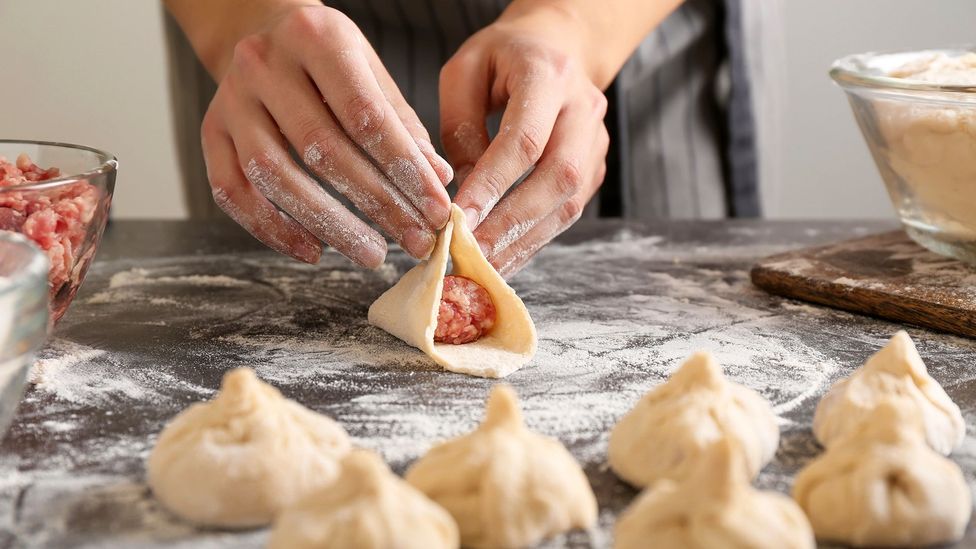
Some similar dumplings, like Turkish and Armenian manti, are linked to khinkali, according to food writers Aylin Tan from Turkey and Fuscia Dunlop, an English specialist of Chinese cuisine. The two have completed one of the few pieces of rigorous scholarship on dumpling history, presenting a paper in 2012 that traced dumpling connections along the Silk Road between Chinese and Turkish varieties.
Rachel Laudan, a US historian who wrote Cuisine and Empire: Cooking in World History, has a particular interest in dumplings, having mapped their reach to across Asia and Europe. While khinikali would require more study, it’s “extremely credible” that they first arrived with the Mongols, Laudan said. “It’s much more plausible that this is a kind of ghostly remnant of something that happened 700 years ago than that – ‘Oh boy!’ – they just invented this independently’.”
Chinese doctor Zhang Zhongjing who lived in the second 2nd Century AD is often given credit for the first dumping, named jiaozi, more than 5,000km to the east of Georgia, in south-western China. Effectively, if you look at a map of which countries have traditionally eaten dumplings, they are within the borders (roughly) of the historical Mongol Empire, which transmitted this culinary staple through conquest, said Laudan.
“The Mongols were incredibly smart about creating their imperial cuisine,” said Laudan. Historians have translated a cookbook from 1330, found in the Mongol court in China, named the Proper and Essential Things for the Emperor’s Food and Drink, which shows how the recipes were adapted to pay respect to local peoples. One noodle dish is customised with yoghurt garlic sauce for Turkish audiences but has ginger, orange peel and soy sauce added in China, she explained.
“This a very deliberate example of what is now called ‘appropriation’, of the history of cuisines of the regions, to create a new hybrid imperial cuisine.”
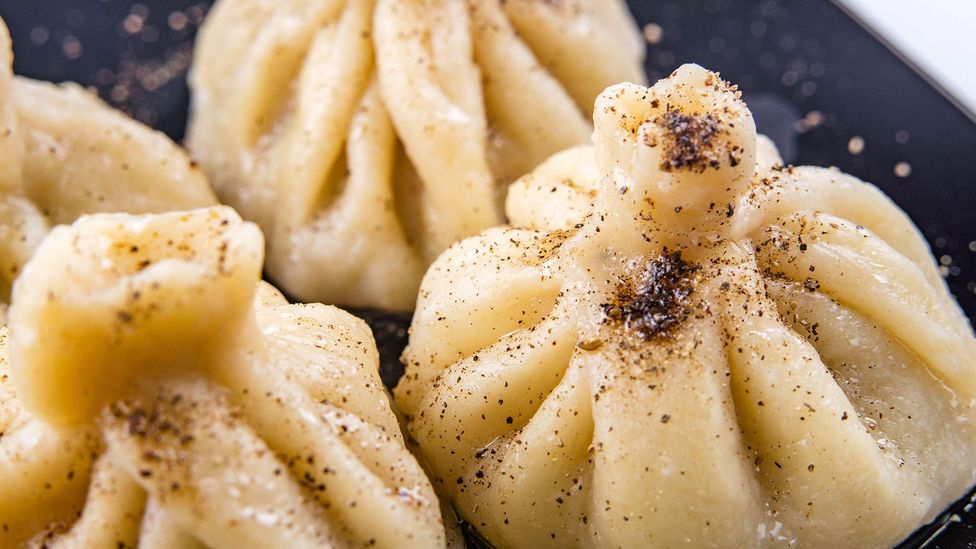
Khinikali very likely belongs somewhere on a family tree alongside not just xialongbao – the delicate soup dumplings beloved at dim sum halls to which it is sometimes compared – but also Russian pelmeni, Turkish and Armenian manti, East European pierogi, Central and South Asian sambusak and samosa, and Japanese gyoza.
Gachechiladze said a new generation of chefs is coming around to the idea that Georgian cooks are not just great preservationists, whose skills lie solely in keeping beloved meals alive through times of hardship. Younger chefs see that Georgians, sandwiched between aggressive empires, have always taken, adapted and learned from an international web of influences, she added.
“They’re going farther than I did, and I’m not, anymore, the enemy of the country,” she laughed. “Now this ‘fusion’ is a very modern term, but this Georgian food was always fusion, for centuries and centuries and centuries.”
Credit: Source Link